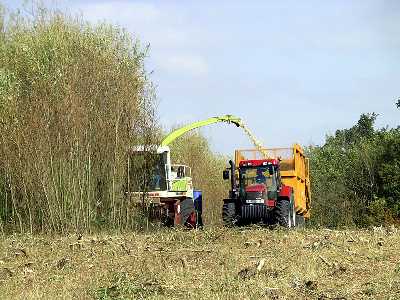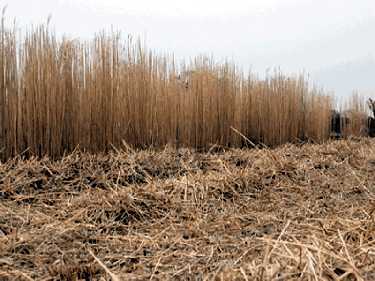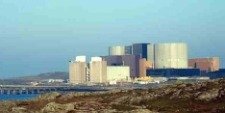|
Anglesey Biomass Projects, Energy Island Prospects
As the pressure mounts to find alternative energy sources, Anglesey biomass projects may be one solution to the effort to reduce our continual dependence on major fossil fuels like coal, oil and gas. In fact biomass is the most common form of renewable energy on our planet and is broadly derived from organic matter such as wood, waste and a range of alcohol fuels. In forestry there is a huge resource in terms of waste cuttings, tree roots and branches along with the specifically grow crops like short rotation coppice and other suitable grasses.
Now with the recent ending of production at the jointly owned Rio Tinto Alcan-Kaiser Aluminium smelter, Anglesey Aluminium Metals Limited, outside Holyhead, the company is looking to construct a 300 MW biomass plant on the existing site. While the smelting process was a big consumer of electricity and a significant contributor to CO2 emissions, roughly 12% of electricity consumed in Wales, the proposed Anglesey biomass project would be carbon neutral, as combusting the various organic matter does not add to the carbon cycle.

Sources of biomass: Energy crops - where the main purpose of growing the crop is to produce a fuel either for electricity or heat. Ideally choose a crop for maximum harvest but with minimum use of fertilizer. Short rotation – the advantage of this source is that times frames are much shorter than if mainstream forestry sources are used, where inevitably the time lead times are longer. Short rotation is great for energy crops as it is relatively straightforward to harvest, and it grows back again quickly after being cut down. The main sources of short rotation coppice are poplar and willow. Municipal and agricultural waste – these can be good sources and the supply is constant. Among the possibilities here are crop residues, animal manure, silage, poultry litter and food waste. Another key consideration when deciding on what fuel or range of fuels to use in the biomass reactor is the calorific value of the material.

For example, there can be quite a variation, with say wood pellets releasing around 16-18 MJ per Kg while green softwoods are nearer the 7-9 MJ per Kg range. The Anglesey biomass project may have to consider other sources of material as local and regional wood products and waste could be insufficient given the proposed size of the power plant at Holyhead. Use may need to be made of waste cuttings from major timber projects overseas and the environmental impact of transporting this fuel by ship needed to be factored into the overall carbon footprint equation.
Whenever any form of organic matter such as vegetation is burnt there will be a release of greenhouse gases and particulates. Any biomass project on Anglesey will need to carry out proper assessments of the potential environmental, social and ecological impact of the various gases and particulates emitted from the plant.
There can be climate change implications from the release of particulates from burning biomass as well as potential effects on public health with respiratory problems often a key concern. The burning process is only half of the equation as this stage sees the release of tonnes of carbon dioxide into the atmosphere that has been stored away for years through photosynthetic processes. In order to balance this release of carbon there is need for an offset strategy where new wood is planted quickly to build up a new carbon sink, as the process starts over again. Over the next few months a planning process is underway in which the UK Government Department of Energy and Climate Change (DECC) will look at the proposal and application. There is a possibility that the biomass plant proposed for Holyhead could power the whole island and much more and so local communities will be looking to secure a special contract with the power station for lower cost electricity. Looking ahead it is clear that Anglesey biomass projects such as the above can play a notable role in contributing towards the UK’s climate change targets, provide quality, skilled jobs for local people and make the island an exemplar and new centre for renewable energy production. .
|





 This unique location in North Wales has acquired the appellation “Energy island” by some leading advocates of maximising the island’s natural advantages of wind, wave and tide alongside its nuclear capacity both physical and in terms of human resources.
This unique location in North Wales has acquired the appellation “Energy island” by some leading advocates of maximising the island’s natural advantages of wind, wave and tide alongside its nuclear capacity both physical and in terms of human resources.
 Burning of biomass
Burning of biomass






